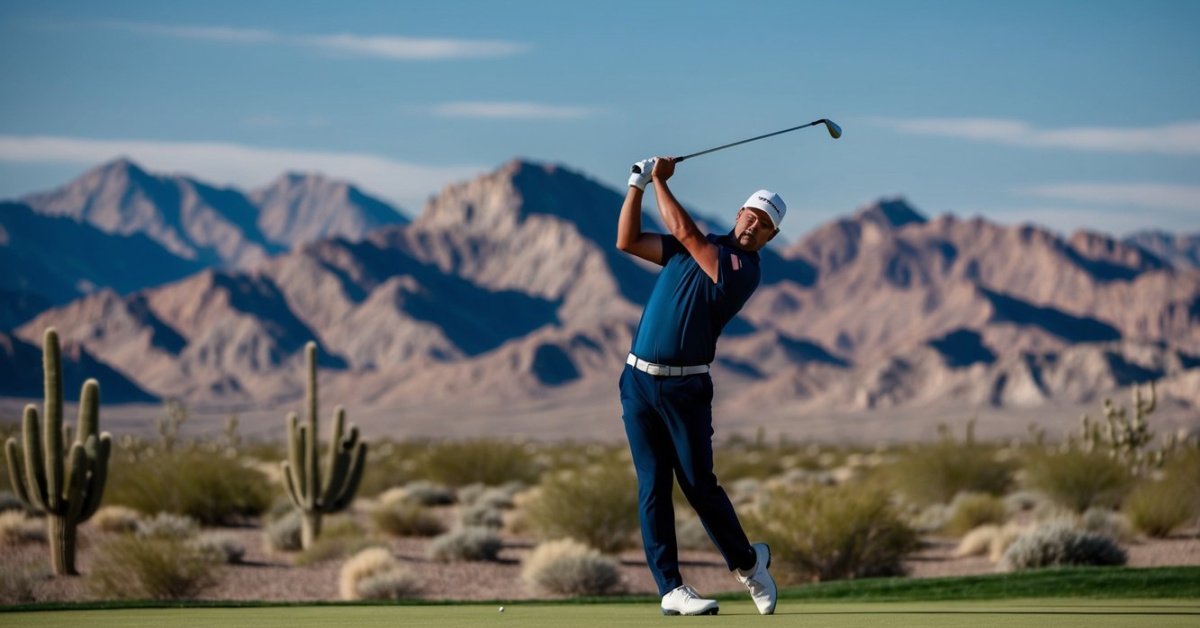Golf isn’t just a game; it’s a passion that doesn’t fade with age. As you’ve grown wiser on the course, you might’ve noticed that the right equipment can make all the difference. And when it comes to golf, the ball is as crucial as the club in your hand.
Benefits of Using Senior-Specific Golf Balls
When you’re out on the green, embracing the serene landscape and the gentle claps as you make that smooth swing, it’s essential to consider every aspect of your equipment. Senior-specific golf balls are not just a marketing gimmick; they offer tangible benefits that can improve your game dramatically.
Lower Compression for Enhanced Performance
Senior golfers often experience a decline in swing speed. It’s a natural part of aging, but it doesn’t mean you have to sacrifice distance. Senior-specific golf balls have lower compression, typically ranging between 55 and 70. This means the ball will compress more easily upon impact, enabling you to achieve greater distance even with a slower swing speed. With these balls, your drives will stay strong and lengthened, maintaining your competitive edge.
Improved Control and Accuracy
As a seasoned golfer, you know how vital control and accuracy are. These balls are designed with a softer feel which grants more spin around the greens. That’s not just hearsay; many seniors report better control over their short game, which could be crucial around challenging pin positions.
Designed for Your Game
Senior-specific golfs are designed with your game in mind. Manufacturers understand the nuances of play as a senior and create balls that help overcome common challenges. Whether it’s the cover, the core, or the dimple pattern, each element is fine-tuned to ensure that your ball complements your style and strengthens your performance.
As you tee off with a senior-specific golf ball, you’ll notice that these benefits aren’t just theoretical. They translate into a more enjoyable and rewarding experience on the course. Keep an eye on your shots, and you’ll observe how these specialty balls can breathe new vibrancy into your game, shot after shot.
Key Features to Consider When Choosing a Golf Ball for Seniors
When you’re on the hunt for the perfect golf ball, it’s crucial to focus on certain features that can significantly impact your game. As a seasoned golfer with a low handicap, you know the devil’s in the details.
Compression should be at the top of your list. Golf balls with lower compression are engineered to be more forgiving with slower swing speeds – a common attribute among senior players. They’re easier to compress upon impact, launching higher and farther.
Spin is another key feature. You want a ball that gives you enough spin to control your shots around the green yet doesn’t reduce your distance off the tee. Look for balls specifically designed to provide a balanced spin across all clubs.
« How to Use Golf Ball Stamper: Personalize Your Game with Ease
Best Golf Ball for Seniors with Slow Swing Speed: Unlock Your A-Game Now »
Consider the construction of the ball as well. Multi-layer balls can offer more sophistication in your game, with outer layers granting you the feel and control you need on approach shots, while the core delivers the energy for longer drives. Here’s a snapshot of what you should be eyeing:
| Feature | Importance for Seniors |
|---|---|
| Compression | Low to match swing speed |
| Spin | Balanced for control and distance |
| Construction | Multi-layer for feel and power |
Durability is another aspect that cannot be overlooked. A ball that maintains its integrity over multiple rounds is not only cost-effective but also ensures consistent performance. A durable cover will resist scuffs and scratches, thus maintaining your ball’s aerodynamic properties.
Lastly, don’t forget about the feel. A softer ball will generally provide you with a better experience, especially in short game shots where touch is everything. You’ll want a ball that communicates clearly to your hands the moment it’s struck – it’s all about that feedback which lets you gauge the effort needed for each shot.
Align these features with your personal preferences and you’ll be well on your way to selecting a ball that complements your game and keeps you competing at the highest level. Remember, the right golf ball is an extension of your skill – choose wisely and watch how it enhances every aspect of your play.
Understanding Compression and Its Importance for Seniors
When you’re out on the course, the compression rating of a golf ball can make a significant difference in your performance. Compression is measured by the deflection a ball undergoes when it is struck. This factor is crucial for senior players, as it directly correlates to the feel and distance that can be achieved, especially when dealing with slower swing speeds.
Lower compression golf balls, typically rated between 45 and 70, are ideal for most senior golfers. These balls are designed to deform more upon impact, which means they can be compressed more easily with slower swing speeds. That’s a bit technical, but here’s what it means for your game: you’ll likely see a better energy transfer from the club to the ball, resulting in greater distance without the need to swing harder.
To visualize this, think about how a sponge squeezes under pressure compared to a harder object. The sponge compresses easily, even with light pressure. Similarly, a low compression golf ball will “squeeze” more effectively as it engages with the clubface, leading to that satisfying launch off the tee.
But it’s not just about the long game. Compression also affects the feel of the ball during short game shots around the green. A lower compression ball tends to provide a softer feel, which can be quite advantageous when you’re trying to finesse a pitch or a putt.
Don’t go rushing to buy the lowest compression ball you can find. It’s essential to understand that too low of a compression can sometimes lead to a lack of control. You’ll want to strike a balance, finding a ball that complements your swing speed while still offering the control you need to place the ball where you want it. It’s a matter of matching your swing characteristics to the ball’s design—a harmony that can elevate your game to new heights.
Top Golf Ball Brands for Seniors
When you’re searching for the ideal golf ball, you’ll find that some brands have built a reputation for catering to the needs of senior players. These brands offer balls that specifically match the required compression levels without sacrificing the quality that low-handicappers expect.
Titleist leads the pack with its Tour Soft golf balls. Designed with a large core and a low 65 compression rating, the Tour Soft provides exceptional distance and a consistent flight for players who don’t generate high swing speeds. The thin 4CE grafted cover ensures a soft feel, making it easier for you to control your shots around the greens.
Bridgestone’s e6 series is another favorite among senior golfers. The e6 is renowned for its low driver and long-iron spin, tailored for straighter shots, which is a boon if your goal is to improve accuracy. With a compression rating hovering around 50, these balls are a smart choice for seniors looking to enhance their performance without overexerting themselves.
Callaway’s Supersoft balls have become synonymous with senior golf play. As the name suggests, they’re among the softest on the market, with an ultra-low compression rate of 38. This makes them ideal for seniors as they can capitalize on their energy for an increase in distance. Plus, the HEX aerodynamics reduce drag and promote a stable flight.
For a mix of feel and distance, consider Srixon’s Soft Feel golf ball. It’s engineered with a 60 compression rating and a Rabalon HR+ and Pana-Tetra blended soft cover. This combination provides a comfortable feel with every club, which is critical for players who prioritize proximity to the hole.
When selecting the best ball for your game, keep in mind your individual swing speed and skill level. Trying out different brands and models will provide valuable insights into what works best for you. Remember, the perfect senior golf ball is one that complements your swing and enhances your overall experience on the course.
Best Golf Balls for Seniors With Slow Swing Speeds
If you’re a senior golfer with a slower swing speed, finding a golf ball that complements your game is essential. Slow swing speeds, typically below 85 mph, require balls designed to maximize your driving distance and improve your overall play.
Soft Feel, Maximum Distance
Look for golf balls with a soft feel that maximize distance. These are typically designed with a lower compression core which allows for a better energy transfer from your slower swing, translating to greater distance on the course. Brands like Titleist and Callaway offer balls that are tailored for this purpose.
Enhanced Aerodynamics
Some balls are engineered with enhanced aerodynamic properties. Manufacturers often use dimple designs that reduce drag and promote a stable and penetrating ball flight. This is especially beneficial if you have a tendency for a slow and smooth tempo.
Choose the Right Core
Selecting a ball with the right core can make a significant difference. Here’s what senior golfers should aim for:
- Low compression core reduces the force needed to compress the ball.
- Soft outer layer provides better control around the greens.
- Gradational core helps achieve a more consistent ball flight.
Top Picks for Slow Swing Speeds
Many reputable brands offer options that fit the bill. Here’s a quick rundown:
- Titleist TruFeel: Known for its ultra-soft feel on every shot.
- Bridgestone e6: Designed for straighter, longer shots with a soft feel.
- Callaway Supersoft: Lives up to its name, with a soft feel and low drag for added lift and distance.
- Srixon Soft Feel: Offers a high-launch, low-spin trajectory ideal for slow swingers.
Don’t be afraid to experiment with different models until you find the one that feels just right in your hands and suits your playing style. Remember, the goal is to enhance your performance by selecting a ball that responds to your unique swing characteristics.
Conclusion
You’ve got the scoop on what makes a golf ball ideal for seniors with slower swing speeds. Remember, it’s all about a ball that offers a soft feel and travels the distance you need. With options like the Titleist TruFeel, Bridgestone e6, Callaway Supersoft, and Srixon Soft Feel, you’re well-equipped to make a choice that’ll suit your game. Don’t hesitate to try out a few to see which one feels right for you. Here’s to enjoying your time on the course and playing your best game yet!
Frequently Asked Questions
What is the best type of golf ball for seniors with slow swing speeds?
A golf ball with a soft feel, low compression core, and maximum distance is typically best for seniors with slow swing speeds.
Why is a soft outer layer important for golf balls suited for seniors?
A soft outer layer helps to increase control and provides a softer feel upon impact, which can be more comfortable for seniors.
How does golf ball aerodynamics affect seniors with slower swing speeds?
Enhanced aerodynamics can reduce air resistance and help the ball travel further, which is beneficial for players with slower swing speeds.
Can the core design of a golf ball really make a difference for senior golfers?
Yes, a low compression core that reduces spin and increases distance can significantly improve a senior golfer’s game.
What are some recommended golf ball models for senior players?
Some top picks for senior players include Titleist TruFeel, Bridgestone e6, Callaway Supersoft, and Srixon Soft Feel.
Is it necessary for senior golfers to experiment with different golf ball models?
Yes, experimenting with different models is encouraged to find the golf ball that best suits their playing style and maximizes performance.











